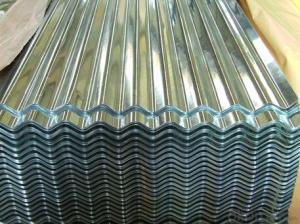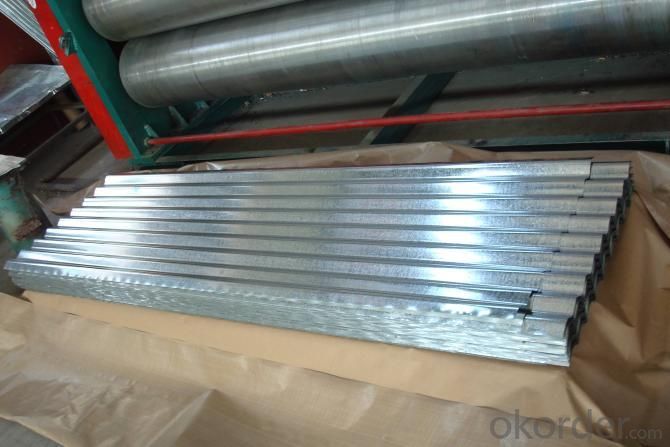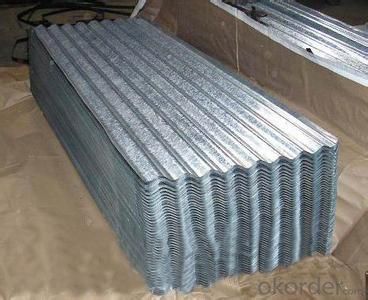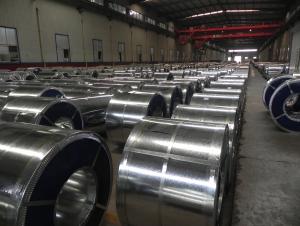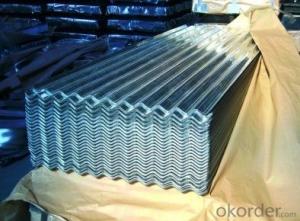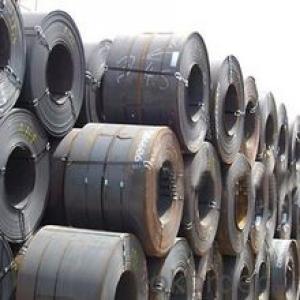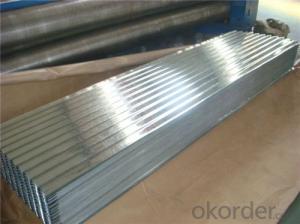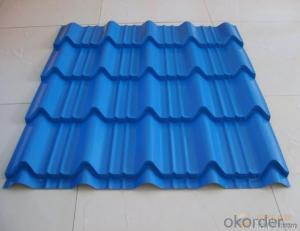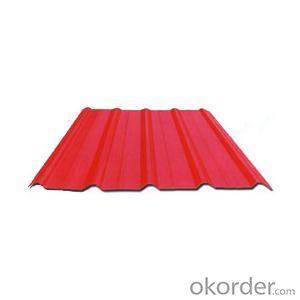Hot-Dip Galvanized Steel Roof with Good Price
- Loading Port:
- Tianjin
- Payment Terms:
- TT OR LC
- Min Order Qty:
- 50 m.t.
- Supply Capability:
- 10000 m.t./month
OKorder Service Pledge
OKorder Financial Service
You Might Also Like
1. Hot-Dip Galvanized Steel Roof Description:
Hot-dip galvanized steel roof are available with a pure zinc coating through the hot-dip galvanizing process. It offers the economy, strength and formability of steel combined with the corrosion resistance of zinc. The hot-dip process is the process by which steel gets coated in layers of zinc to protect against rust. It is especially useful for countless outdoor and industrial application.
2.Main Features of the Hot-Dip Galvanized Steel Roof:
• Excellent process capability
• Smooth and flat surface
• Workability, durability
• Excellent heat resistance performance
• High strength
• Good formability
• Good visual effect
3.Hot-Dip Galvanized Steel Roof Images
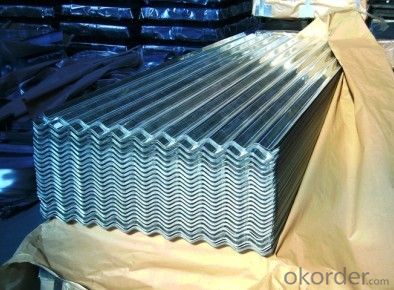
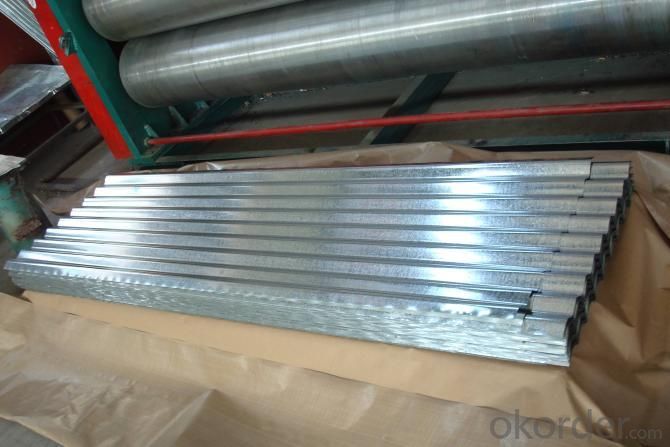
4.Hot-Dip Galvanized Steel Roof Specification
Material: Galvanized Sheet
Width: 650/800/890/900
Length: 1500/1800/2000/2400/3005/3600 or customized
Thickness: 0.2-2.0
Surface Treatment: Hot dipped/Bended
Application: warehouse; shelter; Commercial facilities; industrial facilities
5.FAQ of Hot-Dip Galvanized Steel Roof
Which payment term we can do?
L/C at sight or T/T.
What’s the basic material of this product?
Galvanized/Aluzinc Steel
- Q: How are steel coils used in the production of steel rings?
- Steel coils are used in the production of steel rings by being fed through a machine that cuts and shapes the coil into individual rings. These rings can then be further processed and manipulated to create a wide range of steel products, such as bearings, pipe fittings, or automotive components.
- Q: All the appliances in my kitchen are stainless steel, and I hate how they look becuase every time I wash them they are full of streaks. Is there a good cleaner made for stainless steel that won't leave streaks?
- WD40 is great for cleaning stainless steel anything for some reason it protects it from finger prints things so you won't have to clean it as often. WD40 is great for thousands of other uses too, it can remove stickers, dried paint from glass, wipes away crayon wax, lubricates squeeky parts, spray it on your lawnmower or bike before you put it away for winter it'll come out in spring rust free.... so you'll get more than your moneys worth from a small tin.
- Q: My daughter wants a pair of steel toe cap boots for around the horses but wants them warm, so ideally fur lined etc. Does anybody know where I could purchase them as everywhere I look its only one or the other, cant get steel with fur lining. Very frustrating. I live in the uk. Many thanks.
- Steel toe boots around horses is a big no-no! horses are heavy enough to bend the steel and that could possibly cut into her foot. Even if it doesn't cut into her foot, the boot is ruined after the first time a horse does step on it. On the other hand, Mountain Horse and Ariat both make great winter riding boots.
- Q: How are steel coils used in the manufacturing of construction cranes?
- Steel coils are used in the manufacturing of construction cranes primarily for their strength and durability. These coils are formed into various components such as beams, plates, and sections, which make up the structural framework of the crane. Additionally, steel coils are used to fabricate critical parts like the boom, jib, and counterweights, ensuring the crane's stability and lifting capacity. The high tensile strength of steel coils enables cranes to withstand heavy loads and harsh working conditions, making them essential for safe and efficient construction operations.
- Q: How are steel coils used in the production of furniture?
- Steel coils are used in the production of furniture as a key component for creating sturdy and durable frames. These coils are typically used in the construction of sofas, chairs, and other seating furniture to provide structural support and ensure long-lasting quality.
- Q: What are the different coil packaging options available for steel coils?
- There are several different coil packaging options available for steel coils, depending on the specific requirements and preferences of the customers. Some of the commonly used packaging options include: 1. Steel Strapping: This is a traditional method of packaging steel coils, where a high-tensile steel strap is used to secure the coil. It provides excellent stability and protection during transportation and storage. 2. Plastic Strapping: Plastic strapping is a more cost-effective and lightweight alternative to steel strapping. It is commonly used for smaller and lighter steel coils, providing adequate strength and protection. 3. Shrink Wrapping: Shrink wrapping involves covering the steel coil with a plastic film and then applying heat to shrink and tightly seal the film around the coil. This packaging method offers protection against moisture, dust, and other contaminants. 4. Wooden Crates: Steel coils can also be packaged in wooden crates, which provide additional protection against physical damage during handling and transportation. Wooden crates can be customized to fit the specific dimensions of the coil and can be easily secured with straps or nails. 5. Coil Covers: Coil covers are large, heavy-duty plastic or fabric covers that are placed over the steel coil to protect it from environmental factors such as UV exposure, moisture, and dust. They are often used in combination with other packaging methods for added protection. 6. Paper or Fiberboard Wrapping: This packaging option involves wrapping the steel coil with paper or fiberboard material. It provides a lightweight and cost-effective solution for protecting the coil against minor scratches and abrasions. 7. Customized Packaging: Depending on the specific requirements of the customer, steel coils can be packaged using a combination of the above options or customized packaging solutions. This may include additional padding, corner protectors, or special handling instructions to ensure the safe transportation and storage of the coils. It is important for customers to consider factors such as coil size, weight, transportation mode, storage conditions, and budget when choosing the most suitable coil packaging option for their specific needs.
- Q: How are steel coils inspected for surface finish after processing?
- Steel coils are typically inspected for surface finish after processing using visual and tactile methods. Trained inspectors visually examine the coils for any imperfections, such as scratches, dents, or uneven coating. They also run their fingers over the surface to detect any irregularities. Additionally, advanced technologies like digital imaging systems and laser scanners are employed to provide accurate and detailed analysis of the surface finish.
- Q: How are steel coils used in the manufacturing of industrial valves?
- Steel coils are used in the manufacturing of industrial valves as they provide the necessary material for constructing the valve bodies and other components. The steel coils are processed and shaped into the desired form, ensuring the valves are durable and can withstand high pressure and temperature conditions.
- Q: I have a Victorinox Pioneer, and I recently filed a little metal off the blade for some jimping. Is the already stainless steel blade still stainless?
- Stainless steel knives, sinks, etc.may or may not be stainless steel all the way through. The question arises however, what Quality of stainless steel? For steel to be highly rust resistant, a minimum of 12% chromium must be added to the iron along with carbon (for hardness). Good food-grade stainless also is likely to contain nickel, niobium, molybdenum, and/or titanium. Victorinox has a pretty good reputation to protect so I would expect your blade is still stainless. Some good old American brand names however have been sold to marketers who outsource manufacturing to China and scrimp on the chromium and nickle content in their stainless products. That is why you can spend $50 at Lowes for a stainless steel barbeque tool set of fork, tongs, lifter etc and find them spotted with rust within a few months.
- Q: i need a company that sells strong steel doors because my neighbors apartment was broken into. I need a strong steel door for the outside of the home, where you first enter. please list places in the US, or in NY.
- The okorder /
Send your message to us
Hot-Dip Galvanized Steel Roof with Good Price
- Loading Port:
- Tianjin
- Payment Terms:
- TT OR LC
- Min Order Qty:
- 50 m.t.
- Supply Capability:
- 10000 m.t./month
OKorder Service Pledge
OKorder Financial Service
Similar products
Hot products
Hot Searches
Related keywords
